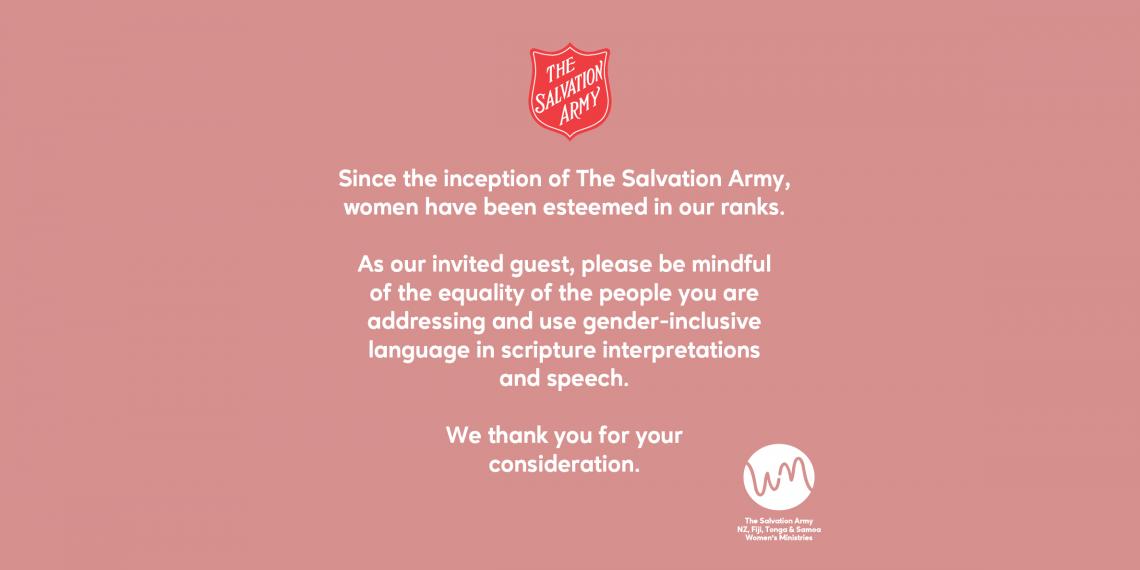The Salvation Army inclusive language invite

The Salvation Army joins Jesus in valuing women. We have prepared this statement to invite speakers to use gender-inclusive language throughout their speech and scripture. Please use this however you will find useful.
Jesus included women and men together in the Gospel and priesthood, and we want to remove any obstacle that might communicate anything different. One way you might do this is to use our prepared statement when inviting speakers, asking them to use gender-inclusive language.
Please feel free to share this statement for your future events. We encourage you to edit it if you need to, in order to best fit your context and community!
'Since the inception of The Salvation Army, women have been esteemed in our ranks. As our invited guest, please be mindful of the equality of the people you are addressing and use gender-inclusive language in scripture interpretations and speech. Thank you for your consideration.'
Download our pic to share on Social Media
Share the image at the bottom of the page on your social media channels, or share straight from our Facebook Page!
What is gendered language and why should we change it?
Gendered-language is understood as 'language that has a bias towards a particular sex or social gender.' In historical documents and some early translations of the Bible, men were viewed as the default 'human experience', so male pronouns were used to describe both men and women.
Now, we understand the ludicrous injustice of ignoring women's worldivew.
Check out Gender-Inclusive Language in writing and Importance of Gender-Inclusive Language for hearing the Gospel for a little more on the ways that using gender-inclusive language impacts women positively.
Is your language alienating women? Ask yourself:
- Have you used 'man' or 'men' or words containing them to refer to people who may not be men?
- Have you used 'he,' 'him,' 'his,' or 'himself' to refer to people who may not be men?
- If you have mentioned someone’s sex or gender, was it necessary to do so?
- Do you use any occupational (or other) stereotypes?
- Do you provide the same kinds of information and descriptions about people of different genders?
And gently train yourself and others to change.


